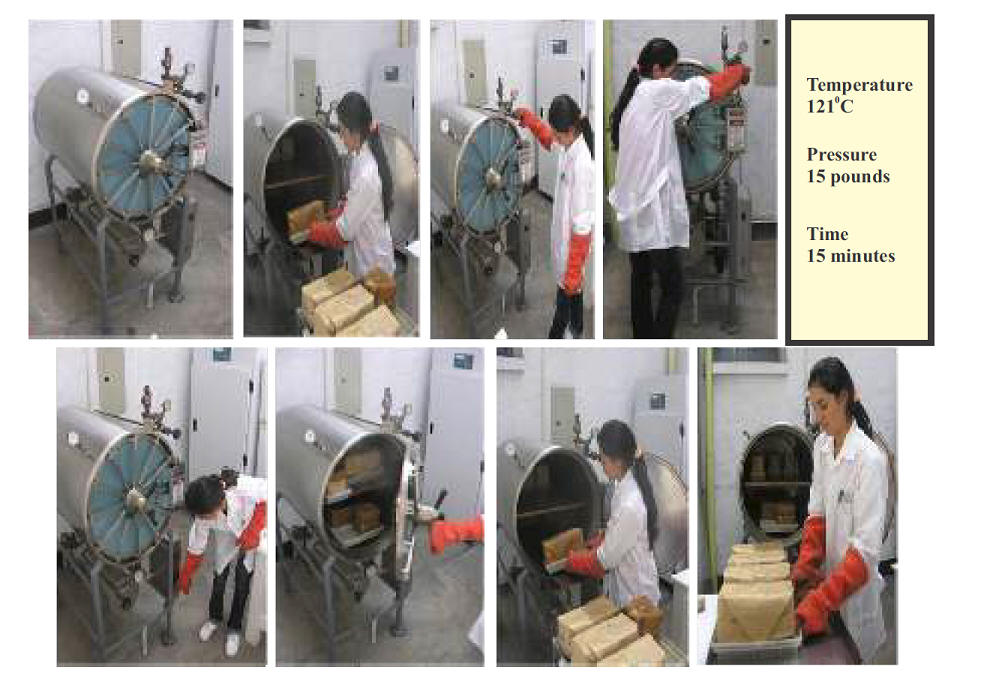-l and then add required quantity.
Take 500 ml double distilled water in a 2.0 liter beaker, keep
on adding and dissolving the vitamins sequentially in descending order as
listed above, and finally make up the volume to 1000 ml by adding distilled
water. Store at 0-4
0C.
Vitamin stock is very prone to microbial contamination in storage. Therefore,
always check the stock before using.
Media preparation
Routine preparation of culture media using stock solutions is simple and
involves following steps. The method has exemplified for preparing 1.0 liter
of MS basal medium.
Murashige and Skoog
(MS)
media for 1000ml
|
S. No. |
Name of the chemical |
Quantity (ml) |
|
(10X)
|
(40X) |
| 1. |
MS-I |
100.0 |
25.0 |
| 2. |
MS-II |
100.0 |
25.0 |
| 3. |
MS-III |
100.0 |
25.0 |
| 4. |
MS-IV |
100.0 |
25.0 |
| 5. |
MS-V |
100.0 |
25.0 |
- Mixing of stock
solutions
-
In general, for potato micropropagation the Murashige and
Skoog medium is supplemented with 0.1 M sucrose/sugar (20 or 30 g) and
4.19 μM (1.0 mg/ml ) D-calcium pantothenate.
-
Weigh and add required quantities of sucrose and dissolve
by magnetic stirring.
-
According to the purpose of the medium, other medium
conjugates/ additives are added, and the volume of the medium is made up
to 1000 ml by distilled water.
-
Adjust the pH of the medium to 5.8 using 0.1 N NaOH or 0.1
N HCl before autoclaving. Note that the pH meter should be calibrated by
standard buffers (pH 4.0 and 7.0) immediately before adjusting the medium
pH.
-
For preparing semisolid medium, heat the medium until near
boiling in a microwave oven or gas oven with intermittent stirring and add
agar at the rate of 6.0-8.0 gl
-1
or gelrite at the rate of 2.0 gl-l.
Mix thoroughly and dispense measured volume into culture
tubes/containers/vessel using automatic media dispenser.
For preparing liquid medium, pH adjusted media are
directly poured in suitable containers.
Plant tissue culture media are usually autoclaved at 121
0
C for 20 min (15 Ib in
